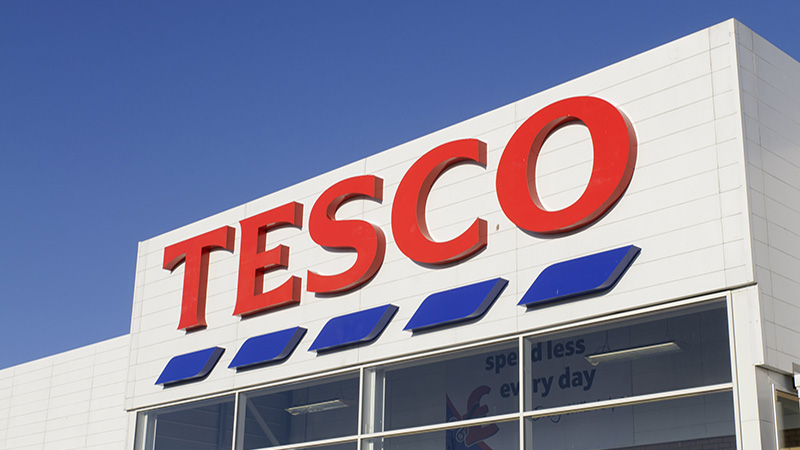Monday 30 September
- First-half results from Playtech, Bango and James Halstead
- Purchasing managers’ indices (PMIs) for manufacturing and services industries from China
- German retail sales
- UK Q2 GDP growth (third and final estimate)
- UK mortgage approvals
Tuesday 1 October
- British Retail Consortium (BRC) UK shop price index
- Purchasing managers’ indices (PMIs) for manufacturing industries from Asia, Europe, the UK and USA
- Japanese Tankan business sentiment survey
- EU flash inflation reading
- US Job Openings and Labor Turnover Survey (JOLTS)
- US car sales
- In the US, quarterly results from Nike and McCormick
Wednesday 2 October
- First-half results from JD Sports Fashion
- Trading statement from Topps Tiles
- OPEC+ meeting
- EU unemployment
- ADP US payrolls survey
- US oil inventories
- In the US, quarterly results from Levi Strauss, Novagold Resources and Conagra
Thursday 3 October
- Full-year results from Galliford Try
- Trading statement from XP Power
- Purchasing managers’ indices (PMIs) for services industries from Europe, the UK and USA
- EU producer price (factory gate) inflation
- Challenger, Gray and Christmas job losses survey in the USA
- US factory orders
- US weekly unemployment claims
- In the US, quarterly results from Constellation Brands
- Tesco first-half results
Tesco will share its first-half results on Thursday, with the chain currently taking up over 25% of the market share while its closest competitor, Sainsbury, trails at 15%.
In the past twelve months, Tesco has picked up another 0.5% of the market share, while Asda lost over 1%.
Russ Mould, AJ Bell investment director, and Dan Coatsworth, AJ Bell investment analyst, said: “Shares in Tesco are up by a third in the past year to their highest level since late 2013, the year when the firm’s reputation was badly damaged by the horsemeat scandal (a supply chain failure which did not affect just Tesco or indeed the UK, as food safety authorities eventually intervened across more than a dozen EU countries).
“Those dark days are long behind the firm, which is taking full competitive advantage of the woes of Morrisons and Asda, which are struggling under the debt burdens shovelled on by their private equity buyers.”
In the first quarter of its financial year, Tesco had a like-for-like sales growth of 3.6% for the UK and 3.4% across all regions, and analysts will keep an eye on if the trend continues through the second quarter. Operating profit will also be watched, with analyst predictions of £2.9bn from retail. Last year, the first half finished with an operating profit of £1.4bn from retail.
“Those forecasts imply little or no progression in the operating margin in the year to February 2025, at just above the 4% mark. Such a lowly margin hardly smacks of price gouging, despite some persistent accusations to the contrary, and the group profit margin is no higher now than it was before the pandemic,” Hughes and Coatsworth said.
“Tesco, if asked, would also doubtless look to press home its value credentials and also note that any sustained attempts to jack up prices and profiteer would flounder and lead to the loss of market share to rivals such as Aldi and Lidl (who already seem to be having Morrisons and Asda for lunch).”
Results could also hold information on the sale of Tesco Bank to Barclays, which is anticipated to close near the end of this fiscal year. The deal would free up near £1bn.
Friday 4 October
- Purchasing managers’ index (PMIs) for the UK construction industry
- US non-farm payrolls, wage growth and unemployment
- JD Wetherspoon full-year results
JD Wetherspoon will release its full-year results of Friday, 4 October, after a stagnant year for share price.
“JD Wetherspoon’s shares are broadly flat over the year, even though the pubs group, with an estate of around 800 sites, is expected to report record sales in the year to July 2024. The issue is therefore presumably one of profit, where increased wages, utility bills and interest costs on the company’s £670 million net debt position are all having an impact,” Mould and Coatsworth said.
In July, the company’s trading statement showed that full-year results would be in line with expectations, including sales of near £2bn and pre-tax income of £72m. Last year, these figures were £1.9bn and £43bn, respectively.
Analysts will also keep an eye on like-for-like sales growth. In the first half of the year, bar sales increased 11.6% year on year, while food rose 7.6%.
“Input costs will also be a key issue, given the 10% increase in the national living wage, food price inflation and also the scope for higher utility bills. The ongoing development of the estate is a key tool for management here, since around 70% is owned on a freehold basis, and the company is proving adept at increasing revenue per venue (of which more in a moment), through innovations such as breakfast, coffee bars and its casual dining menus,” the AJ Bell duo said.
For 2025, current forecasts include £2.1bn in sales and £84m in pre-tax income. While the company stopped dividends and share buybacks during Covid, it did run a share buyback program this year of £40m.
“Cash returns will naturally depend upon profitability but also investment. JD Wetherspoon has a long-term goal to grow its estate to 1,000 pubs and recent openings do seem to focus a little more on central London, where it could be argued the company is under-represented, relative to its overall market position,” Mould and Hewson said.
“JD Wetherspoon’s estate peaked at just over 950 pubs back in 2015, a figure that has since receded to 801 as the company has actively managed its estate, by selling venues; returning leases to landlords upon maturity (or terminating the lease); renovating existing sites; and opening new ones. This is all part of a process to boost revenue per venue – something at which it is proving very skilled, an important facet when input costs remain a major challenge.”











